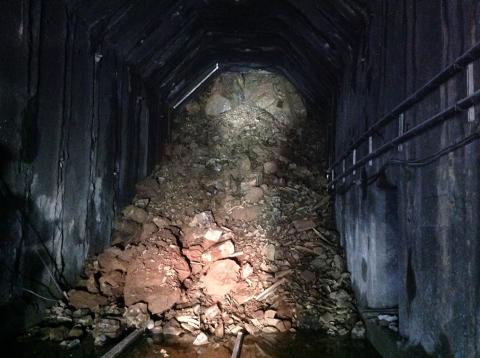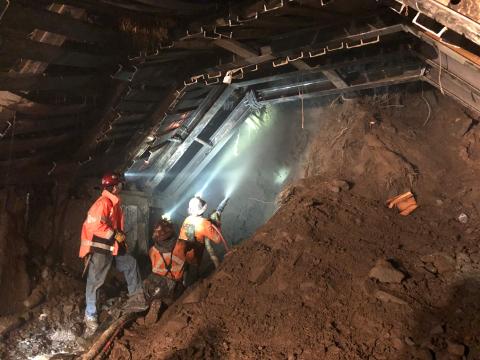Service Update from Beth Whited, CMO
Announcement Number: CN2018-20
Categories: General Announcements
Posted Date: June 28, 2018
To Our Customers,
Over the last few months, we’ve made progress working through our service challenges. Unfortunately, our network has experienced some setbacks this month. You deserve transparency when it comes to our service, so I’d like to provide an update on where we stand today.
Our Challenges
Although we had made strides in reducing operating inventory and increasing velocity, both metrics have receded to April levels. More trains are being held in transit, and this congestion reduces network fluidity and impacts service levels.
The Causes
Two specific issues are contributing to service declines: the tunnel collapse on the Oregon Cascade Subdivision and crew supply.
Tunnel Collapse
On May 29, a tunnel located between Eugene and Chemult, Oregon, collapsed, filling with dirt and rock and requiring extensive repairs. Following the collapse, engineering crews worked around the clock to remove debris and repair damaged steel ceiling structures. This work included removing more than 400 cubic yards of debris from inside the tunnel and rebuilding it carefully and methodically (see the photos below). The tunnel reopened on June 20.
Progress on repairs was painstaking due to the terrain surrounding the tunnel. Typically, tunnels are built into granite, which remains stable during repairs. However, the terrain surrounding the Oregon tunnel is made of dirt and rock, which is easily disturbed and can continue to shift until the structure for the tunnel is rebuilt. In this situation, standard excavation equipment can’t be used, as it increases the likelihood of terrain sliding down the mountain into the tunnel. These conditions made progress very slow, permitting crews to rebuild the roof of the 779-foot tunnel at a rate of just three feet per day. Because of these unstable conditions, repairs that were anticipated to take a week lasted three weeks. Although repairs were slow going, more important is that they were performed safely and without injury.
How does the tunnel collapse and recovery effort impact our network? The rail line running through the tunnel is an important artery connecting the Portland and Roseville service units. As this traffic was rerouted through Salt Lake City, shipments saw additional transit time of four to five days. These delays meant more cars spent additional time on the network, thus consuming greater locomotive and crew resources, which in turn impacts the fluidity of our network and the aforementioned inventory and velocity metrics.
Crew Supply
While the current demand for crews is high, supply is low. As I’ve noted before, we are recruiting heavily to alleviate crew shortages, especially in less-populated parts of the country where worker scarcity is a challenge. Peak vacation season and holidays compound the challenges associated with these shortages. Requests for time off have increased the daily hours held for crews — the number of hours trains wait to move because a crew is unavailable. Although we are continuing to offer attractive hiring bonuses at a number of locations, crew supply will likely remain tight through the summer.
Next Steps
Now that the Oregon tunnel repairs are behind us, service in the affected area should resume once we work through inventory over the next couple of weeks.
We will continue to offer attractive hiring bonuses, recruit heavily and graduate crews in an effort to bolster our workforce in the field. This month we will graduate 225 individuals and another 250 each month through September.
Prior to the tunnel collapse and peak vacation season, the efforts we had in place to improve service were working. We will keep pushing forward with these initiatives. We currently have several recovery initiatives in place dedicated to resources, network variability, terminal performance and strategy, and inventory management.
While setbacks happen, they have not stopped us from working as hard as we can to bring service back to normal levels. We will continue to push forward with the many initiatives that were yielding progress, while finding new ways to recover as well. We will keep you updated.
As always, thank you for your patience, your loyalty and your business.
Sincerely,
Beth Whited
Executive Vice President & Chief Marketing Officer


